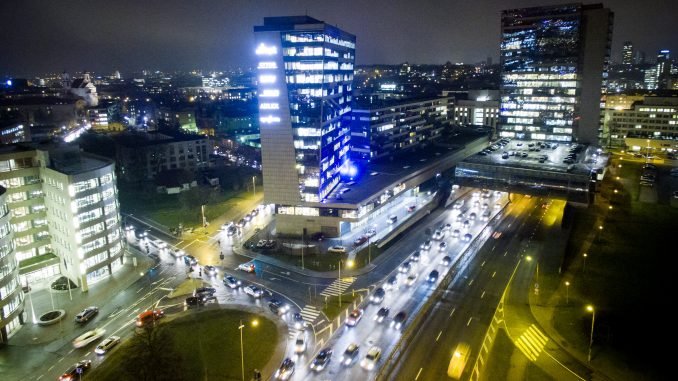
About 282,000 residents currently live in the city of Vilnius. About 210,000 cars are currently registered in Vilnius and the surrounding area. Even if you assumed that only half of these automobiles are used every day for work commutes and that they spend one hour in traffic jams every day, it would be easy to see that Vilnius loses about 24 million work hours a year.
Because the average value generated by a single work hour in Vilnius is about €20, the value lost through the hours that workers spend in traffic jams each year is €480 million. Measuring the value generated per hour by workers in Kaunas and Klaipėda as well as the number of cars used in these cities, one can see that these cities also annually lose €227 million and €119 million respectively. The financial losses in these three cities are equal to 2.2% of Lithuania’s GDP.
Of course, these are general estimates, and you could argue that time spent unproductively in traffic jams doesn’t necessarily mean a lower national GDP. Perhaps people who’ve wasted more time on their trips waste less time at work, or perhaps they lose time for leisure, family or self-improvement time rather than work.
None of this, however, solves the problem – and it’s one that would be rather easy to solve.
Lithuania will continue to invest European Union and tax payers’ funds into road infrastructure development, but in a smart age, we need smart solutions. Unless residents are encouraged to use alternative modes of transportation, neither wider roads nor bypasses will help.
Smart systems installed to observe and regulate traffic flows are not a vision of the future. Many advanced cities have long had systems that observe traffic flows in real time and inform drivers about accidents and back-ups. Every driver can observe traffic intensity in real-time on Google Maps. However, a lack of alternative routes often makes it difficult to solve traffic problems for the most over-loaded roads. However, there are other ways to solve these problems as well.
Ten years ago, a referendum was held in Sweden on a “traffic tax”. Many municipalities came out against it, but the residents of Stockholm decided that such a tax would be useful for the city. The primary use of this tax was to reduce pollution and to collect funds for the city’s management. An additional benefit was that traffic jams were reduced as a portion of city residents chose bicycles or public transportation.
A great advantage of this tax is that it is calculated and collected automatically. When a driver enters a taxed area, their vehicle’s license plate is scanned. At the end of the month, the owner receives an electronic bill that can also be paid automatically. No waste of human capital or time.
The size of the traffic tax depends on when the vehicle is being operated. On weekends, holidays, on the month of July and every day from 18:30 until 6:30, the tax isn’t applied at all. The size of the tax is also differentiated, reaching its highest amount (almost €4 for entering) when traffic jams are at their most intense.
Rather than an unavoidable tax, this is a form of financial encouragement for residents to use public transportation or negotiate more flexible work hours with their employer. Of course, not all fields can provide their workers with such flexibility, and parents raising children can’t always choose when their children must be taken to school or kindergarten. However, other countries have shown that these problems can be solved as well, using public transportation and school buses. Another alternative would be waiving this tax for parents raising two or more children.
The argument we usually hear is that public transportation is not good enough and covers too narrow of an area to replace personal automobiles. However, this is just another argument for why we need to find more ways to collect funds to make the public transportation system more efficient and convenient, whose advantages will instantly be felt by residents with lower incomes.
By the way, automobile scanning equipment is rather simple and has already spread all over the world. Therefore, it is strange that these technologies are only being used in some places to pay for parking, and that they are not being used to capture road rule violations.
For example, vehicular traffic along Gediminas prospektas in Vilnius is prohibited on weekends, but hundreds of vehicles use it every weekend without fear of repercussions. Two automobile license plate scanners would pay for themselves in just a few hours. They would also make it very easy to dissuade car drivers from driving in bus lanes.
The installation of a smart traffic flow regulation system and road rule enforcement system would reduce traffic and air pollution, fill municipalities’ budgets, and improve the quality of public transportation and road infrastructure. The number of vehicular incidents would also be reduced, and the government’s resources would be saved as less and less road patrols would be needed.
These problems could be solved the way they were in Sweden – by asking city residents what they think. I am sure that most of us would like to live in cleaner, safer and more efficient cities.
—-
Nerijus Mačiulis is chief economist at Swedbank

Be the first to comment